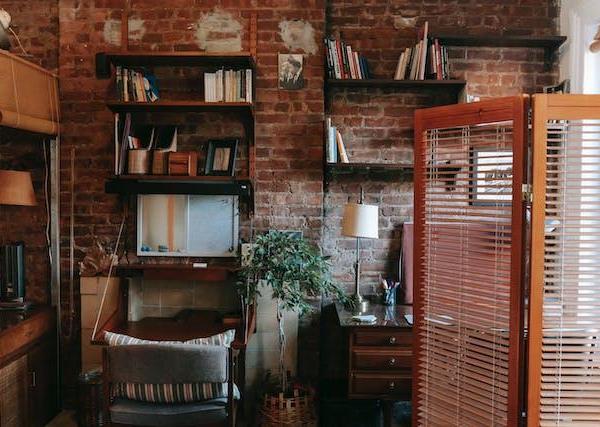Introduction:
Your home is a reflection of your personality and style, and interior design plays a crucial role in creating a space that feels inviting, comfortable, and visually appealing. With so many interior design styles to choose from, it can be overwhelming to find the right one that resonates with your personal aesthetic. However, by exploring different design styles and understanding their key elements, you can discover the perfect combination that suits your taste and creates a cohesive and harmonious space. In this article, we will delve into various interior design styles, explore their characteristics, and provide tips on how to find your personal aesthetic.Minimalist:
The minimalist design style is all about simplicity, clean lines, and a sense of calm and order. This style focuses on decluttering and eliminating excess, creating a space that feels open and uncluttered. Minimalist interiors often feature neutral color palettes, sleek furniture with clean lines, and minimal ornamentation. Key elements of this style include ample natural light, functional furniture, and an emphasis on negative space. To incorporate a minimalist aesthetic into your space, consider decluttering and organizing your belongings, choosing furniture with clean lines and simple forms, and opting for a neutral color scheme with occasional pops of color for visual interest.Contemporary:
Contemporary design is characterized by its sleek and sophisticated aesthetic, with a focus on clean lines, smooth surfaces, and a blend of modern and traditional elements. This style often features a neutral color palette, bold geometric shapes, and a mix of materials such as glass, metal, and wood. Contemporary interiors are known for their minimalist approach to ornamentation, with the emphasis placed on the architecture and furniture as the main focal points. To achieve a contemporary look, consider incorporating statement pieces of furniture, using sleek and glossy finishes, and opting for a monochromatic color scheme with occasional splashes of bold color.Rustic:
Rustic design embraces a warm and cozy aesthetic, evoking a sense of nature and the countryside. This style often features natural materials such as wood, stone, and exposed brick, creating a welcoming and earthy atmosphere. Rustic interiors often incorporate warm and earthy color palettes, textured fabrics, and vintage or distressed furniture. Key elements of this style include exposed beams, natural textures, and a focus on craftsmanship. To bring a rustic vibe into your space, consider incorporating reclaimed wood furniture or accents, using warm and earthy colors, and adding cozy textiles such as wool or fur.Scandinavian:
The Scandinavian design style is known for its simplicity, functionality, and emphasis on light and nature. This style features clean lines, a neutral color palette with pops of soft pastels, and an abundance of natural light. Scandinavian interiors often incorporate natural materials such as wood and leather, combined with light and airy textiles. Key elements of this style include minimal ornamentation, a focus on functionality, and the use of natural elements. To achieve a Scandinavian aesthetic, consider incorporating light-colored furniture, maximizing natural light through large windows or skylights, and adding natural elements such as plants or organic textures.Industrial:
Industrial design draws inspiration from factories and warehouses, embracing a raw and unfinished aesthetic. This style often features exposed brick walls, concrete floors, and metal accents. Industrial interiors typically have an open and spacious layout, with high ceilings and large windows. Key elements of this style include the use of raw materials, utilitarian furniture, and a neutral color palette with occasional pops of bold color. To create an industrial look, consider incorporating metal or reclaimed wood furniture, exposing brick or concrete walls, and using pendant lights or exposed bulbs for lighting.Bohemian:
Bohemian design is all about self-expression, creativity, and an eclectic mix of colors, patterns, and textures. This style embraces a relaxed and free-spirited aesthetic, often featuring a mix of vintage and global-inspired elements. Bohemian interiors are known for their vibrant color schemes, layered textiles, and a mix of patterns and textures. Key elements of this style include bold patterns, a variety of textiles such as rugs and throw pillows, and an abundance of plants and natural materials. To achieve a bohemian look, consider mixing and layering textiles in different colors and patterns, incorporating vintage or handmade furniture and accessories, and adding plants and greenery throughout your space.Finding Your Personal Aesthetic:
With so many design styles to choose from, it can be challenging to narrow down your preferences and find your personal aesthetic. Here are some tips to help you in the process:1. Gather Inspiration: Start by collecting images and inspiration from various sources such as interior design magazines, websites, social media platforms, and even visiting showrooms or model homes. Pay attention to the colors, patterns, textures, furniture, and accessories that catch your eye and evoke a positive emotional response. This will help you identify the elements that align with your taste and preferences.
2. Consider Your Lifestyle: Think about how you want your space to function and feel.Do you prefer a clean and minimalistic design that promotes a sense of calm and organization, or do you lean towards a more eclectic and vibrant aesthetic that allows for self-expression and creativity? Understanding how you want your space to function and feel will guide you towards design styles that align with your needs.
3. Experiment and Mix Styles: Your personal aesthetic doesn't have to be limited to a single design style. Many individuals find that they are drawn to a combination of styles or prefer a more eclectic approach that blends different elements. Don't be afraid to experiment and mix styles to create a unique and personalized space that reflects your personality.
4. Start Small: If you're unsure about committing to a particular design style, start small by incorporating elements of different styles into your space. This can be done gradually, through small changes such as adding new accessories, rearranging furniture, or introducing different colors and textures. Take note of how these changes make you feel and whether they resonate with your desired aesthetic.
5. Trust Your Instincts: Ultimately, trust your instincts and go with what feels right to you. Interior design is a highly subjective and personal process, and what works for someone else might not necessarily work for you. Follow your intuition and choose elements that genuinely resonate with your style and personality.



